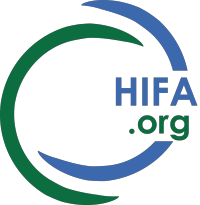(with thanks to Evidence Aid)
This systematic review finds that 'first aid education and task shifting to laypeople may reduce morbidity and mortality, and enhance community capacity to manage health emergencies for a variety of emergency conditions'.
CITATION: Emergency care with lay responders in underserved populations: a systematic review
Aaron M Orkin et al. Bull World Health Organ 2021;99:514–528H| doi: http://dx.doi.org/10.2471/BLT.20.270249
ABSTRACT
Objective: To assess the individual and community health effects of task shifting for emergency care in low-resource settings and underserved populations worldwide.
Methods: We systematically searched 13 databases and additional grey literature for studies published between 1984 and 2019.
Findings: Of 19 308 papers retrieved, 34 studies met the inclusion criteria from low- and middle-income countries (21 studies) and underserved populations in high-income countries (13 studies). Targeted emergency conditions included trauma, burns, cardiac arrest, opioid poisoning, malaria, paediatric communicable diseases and malnutrition. Trainees included the general public, non-health-care professionals, volunteers and close contacts of at-risk populations, all trained through in-class, peer and multimodal education and public awareness campaigns. Important clinical and policy outcomes included improvements in community capacity to manage emergencies (14 studies), patient outcomes (13 studies) and community health (seven studies). While substantial effects were observed for programmes to address paediatric malaria, trauma and opioid poisoning, most studies reported modest effect sizes and two reported null results. Most studies were of weak (24 studies) or moderate quality (nine studies).
Conclusion: First aid education and task shifting to laypeople for emergency care may reduce patient morbidity and mortality and build community capacity to manage health emergencies for a variety of emergency conditions in underserved and low-resource settings.
'The populations studied included rural, urban and underserved subpopulations from North America, Europe, Asia, Africa and Australia and Oceania.'
'More work is needed to orient first aid education to deliver the greatest effects on patient and community health, and to identify the modalities that are best suited to specific contexts, populations, clinical conditions and public health priorities. Task shifting to laypeople for emergency care may save lives, reduce morbidity and enhance community capacity to address acute health problems in lowresource settings.'
COMMENT (NPW): This paper appears to look only at the impact of first aid training. Such training can only reach a very limited number of people. What is the chance that a trained lay person will be available at any particular first aid scenario? If a trained person is not available, what are the possibilities for guiding immediate care? What is the role for first aid apps such as the Red Cross app? HIFA noted in The Lancet Global Health in 2015: 'Production and free availability of such applications to directly empower citizens in low-resource settings with essential, accessible, actionable health-care knowledge, as and when they need it, could open up a new chapter in global health'.
https://www.thelancet.com/journals/langlo/article/PIIS2214-109X(15)00054-6/fulltext
Best wishes, Neil
Neil Pakenham-Walsh, HIFA Coordinator, neil@hifa.org www.hifa.org

